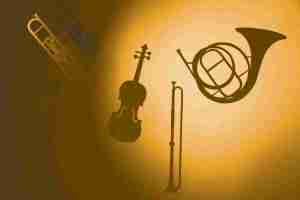SMG Review: gig-fx’s Peter Frampton Mega-Wah

Check out the Peter Frampton Signature Series Mega-Wah by gig-fx!
A LITTLE INTRO
gig-fx was founded by CEO, Jeff Purchon. Jeff’s relationship with guitar started at age 11 and just two years later he was playing small venues all over northern England. He regularly played with school friend Mick Ronson (who went on to play with Bowie) and neighbor Robert Palmer. At 17 he was opening for bands including Black Sabbath, Free, Deep Purple, and Genesis and continues to play with some of the biggest names in music today.
Along the way, Jeff had a desire for pedal designs that were not readily available. Teaming up with an experienced core of analog electronic design engineers, he started his own pedal company in 2004: gig-fx. His initial product, the Chopper, became an instant classic, finding its way at the feet of guitarists including Mark Tremonti, Adam Jones, and Adrian Belew. In designing his initial wah pedal, Jeff sought to combine an auto-wah, envelope filter, and volume pedal into a single unit – such was the birth of the Mega-Wah. Peter Frampton called one day raving about the pedal and requesting specific design tweaks. This led to the signature Peter Frampton Mega-Wah.
WAH-T’S UP
The first thing catching my attention was the dogbone shaped foot pedal. This design allows for easily accessed controls on either side of the base. Intentional or not, it also serves as a carrying handle and sheds weight from what would otherwise make it bulkier and chunkier. That being said, the aircraft aluminum construction provides ruggedness in a lightweight package. The foot pedal offers plenty of surface area which is topped with soft, yet durable and grippy rubber tread. Controls include Mode (Cry, Mega, Trig, and Auto), Rate, Gain, Resonance, and Sensitivity. A blue LED indicates when the pedal is active and a red LED blinks in time to where Rate is set in Auto mode. Instrument IN and OUT jacks are found on either side in addition to a standard 9V DC input jack. A battery compartment, held in place by four Philips screws, houses a 9V battery underneath. No signature pedal would be complete without an actual signature and Peter Frampton’s appropriately graces the side of the medium navy blue chassis.
FOUR WAHS IN ONE
CRY: This is the classic wah mode. Gain controls the overall level of the effect, providing a thinner more subtle wah at minimum setting and a fatter more intense wah at max. Resonance adjusts frequency boost. This translates to more quacky wahs as sounds open up to a broader range. For you mixing fanatics, this can be thought of as adjusting the ‘Q’ – the width of a particular frequency.
MEGA: This mode is similar to CRY, but by boosting the low end it makes for a fatter, fuller sound. The high end is mostly unaffected and Gain and Resonance controls behave similarly.
TRIG: Pick dynamics replace the foot pedal in this mode. Softer attacks are similar to having the pedal down in the lower registers, while sharper, more aggressive picking brings out high end wah. This is a really fun mode as the feeling is very interactive and you can get downright punchy and FUNKY! Gain and Resonance perform similarly as the previous two modes, but Sensitivity adds an additional control. With this turned down, lower frequencies are prominent and it takes massive attacks (no reference to the band) to get the pedal to open up to the higher end, which is very brief. At the opposite end, higher frequencies are promoted as it takes the softest of touches to coax the low end.
AUTO: Lazy foot? No problem. Click over to this mode and the pedal will take over, rocking back and forth through the sweep as if you were tapping in time yourself [Author’s request: Can you actually get the pedal to physically rock back and forth? That would be wicked cool! Anyway…]. Again, Gain and Resonance works the same, with the added Rate control which sets the speed of the effect. Think of a vibrato or tremolo effect, though it’s not quite the same. My only complaint is I would have liked a way to set the width of the wah as it’s hard-wired to maximum sweep. Perhaps a future version could allow the position of the pedal to determine this.
THE FINAL WRAP
The Peter Frampton Mega-Wah is mega fun! Each mode is useful – no gratuitous effects. Performance and sound quality get high marks and physical operation is clean, making my Crybaby feel clunky in comparison. The pedal is activated optically by kicking into action when it senses the pedal is pushed forward about 1/4″ from fully back. This takes some getting used to as rocking all the way back disengages the effect after a period of time set by a control recessed in the bottom of the unit. I think it’s a slick feature that eases ON/OFF, but there’s something about that physical click you get from leaning on a switch that I missed. But who knows? Maybe after a bit more time spent with it, I wouldn’t miss it at all. Finally, gig-fx designs the wah with what they call “better-than-true-bypass” by using a circuit that optimizes the signal between the guitar and amp input. All in all, a very useful, fun wah that offers a lot of bang for the buck and has me considering replacing my beloved Crybaby, even if I have to give up the footswitch.
Street Price – $149
Join the #1 Guitar Social Network! It’s COOL and it’s FREE! Connect with like minded people. Learn, share and rock!
Like this post? Then you won’t want to miss the other awesome posts we have planned. Subscribe to Share My Guitar and get new posts delivered daily…for FREE!













